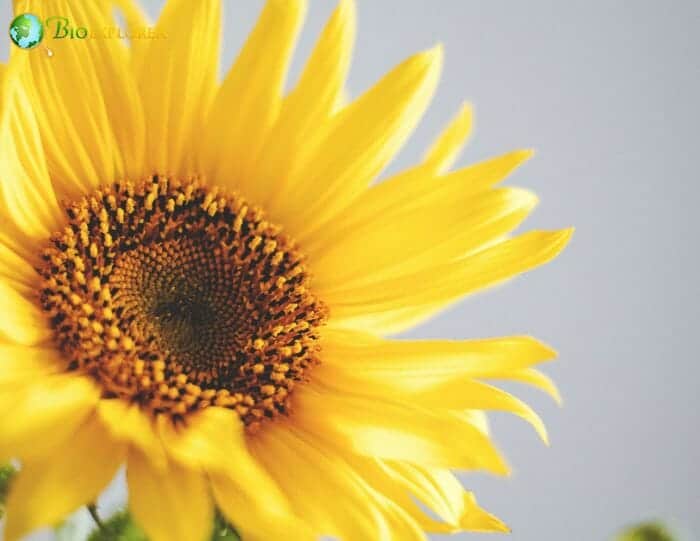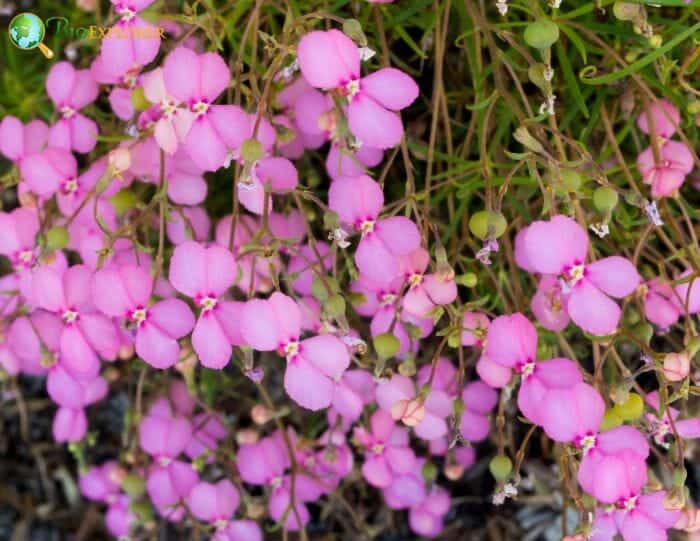
Asterales is a dicotyledonous order of flowering plants that holds ten percent of the angiosperm species diversity[1]. The southern hemisphere is represented by all families of Asterales. They are primarily herbaceous, possess simple leaves, and have many florets forming a composite flower.
Table of Contents
Asterales Pronunciation
Asterales Families
All families of Asterales, including Asteraceae, undergo plunger or secondary pollination[2]. The common sunflower and daisy are among the known plants of the order.
Asterales with 11 families, 1743 genera, and 26,870 species[3] belong to the core asterid clade. Family Asteraceae holds the vast majority of the species (more or less 23,000 species) and is known to occupy the topmost position in the Kingdom Plantae[4] because the members are most advanced and are highly evolved. The 11 families of this Asterales involve:
- Alseuosmiaceae (Toropapa family)
- Argophyllaceae (Silverleaf family)
- Asteraceae (Daisy family)
- Calyceraceae (False-plantain family)
- Campanulaceae (Bellflower family)
- Goodeniaceae (Hop Goodenia family).
- Menyanthaceae (Bogbean family)
- Pentaphragmataceae
- Phellinaceae
- Rousseaceae (Silver-leaved cuttsia)
- Stylidiaceae (Triggerplant family)
![]()
Asterales Distribution

The southern hemisphere is represented by all families of Asterales. However, this order’s two most prominent families (Asteraceae and Campanulaceae) are found worldwide (cosmopolitan).
- Menyanthaceae species are also found worldwide, with the members of Menyanthes and Nephrophyllidium genera limited only in the northern hemisphere.
- The southern hemisphere genera of this family are Liparophyllum and Villarsia. The species of the genus Nymphodes are cosmopolitan in distribution.
- The smaller families of Asterales are commonly found in Australia and nearby areas. Some species are also growing in South America.
![]()
Asterales characteristics

The following are the typical characteristics of the species under Asterales:
- Plant type: All the species are dicotyledonous. They are mostly herbaceous. A few are trees and shrubs. A nutrient storage molecule, oligosaccharide inulin, is present and used by the members of Asterales instead of starch.
- Root: Most of the species, specifically Asteraceae, are taproot producers. Other species have fibrous root systems. Caudices or rhizomes are present in some species.
- Stems: Asteraceae plants are generally erect. Some members are prostrate to ascending. They can be herbaceous, cylindrical, aerial, or branched. The resin or latex can be present in the secretory canals of some species. Members of Campanulaceae are pachycaulous. Only rare species have tuberous stems.
- Leaves: The leaves of the species are mostly simple and rarely compound. They may be opposite, alternate, or whorled.
- Flowers and inflorescences: Many florets formed a composite flower. They are unisexual or bisexual.
- Sepals and Petals: The sepals of the Asterales species are called pappus. They are reduced to bristles, a ring of hairs, or scales. The petals in this group are usually fused at the base and separated with their tips.
- Stamens and carpels: The stamens of the members manifest a unique morphology. They are either fused into a concentric tube or are commonly around the style and are densely aggregated. Members are protandrous, having the male parts mature earlier than the female parts. The gynoecium is syncarpousWhat is syncarpous?Having united carpels. Contrast apocarpous.. Most species have 2 carpels and 1 locule. During pollination, the length of the pistil collects and stores the pollen.
- Ovary and fruit: The ovary is inferior, and the fruit of most members is a multiple of achenes. A few have berries or capsules.
- Seeds: The seeds are typically small.
![]()
Asterales Flower and Reproduction

The most distinctive feature of the Asteraceae[5] is the compact inflorescences of the flowers. The many tiny individual florets are grouped into capitulum or floral heads.
- The involucral bracts surround the receptacle, where all the flowers are attached, forming a pseudanthium. This pseudanthium resembles individual large flowers. The enlarged flowers in the capitulum look like petals, and the involucral bracts resemble the sepals.
- The individual flowers can be ray flowers (zygomorphic) or disk flowers (actinomorphic). A species can have either or both the ray and the disk flowers are found in the same head.
- The individual flowers within the head can be male, female, or hermaphrodite. The sepals are collectively called pappus. They look like bristles or scales. There are 2 united carpels in the ovary.
- The flowers have stamens attached to the petals with long anthers that unite into tubes. Studies indicate that the showy marginal flowers present in the heterogamous heads (flowers in the head margins are distinct from the central flowers morphologically and functionally) attract more pollinators and increase the outcrossing rate. Thus, also increase the genetic diversity and fitness of the species.
- All families of Asterales, including Asteraceae, undergo plunger or secondary pollination. The protandry, combined with the individual’s sequential blooming, allows the members of this order to reduce the possibility of inbreeding and increase the chances of pollination.
![]()
Secondary Pollination System of the Asterales

Members of the sunflower/daisy family are protandrous. This means that the female parts mature later than the male parts. In this pollination system, a tube was formed around the immature style by the stamens.
The pollens are tucked inside and face the flower’s interior. The flower’s style is involved in bringing out the pollen from the floral tube and presenting the pollen to the pollinators of the environment before it becomes receptive to pollen.
The elongation of the style within the floral tube could lead to 2 things:
- The style can push the pollen out into the environment.
- The style (covered by the brush-like hairs) carries the pollen out of the floral tube as it emerges.
This facilitates outcrossing since the pollen is presented to the pollinators while the stigma is still not receptive. The style splits and reveals the stigmatic surface after a specific period (depending on the species) only when the stigma is mature and becomes receptive to pollen.
It then waits for the outcross pollen. In this instance, most of the flower’s own pollen is already taken away from other plants. This manner reduces the chance of self-pollination and allows sufficient time for pollen presentation.
![]()
Asterales Example species
Many of the species of Asterales[6] are economically important food crops, spices, flavorings, traditional medicine, and common garden plants. The following are the example species under this order.
- Common Sunflower[7] – The seed of sunflower is edible. It also has many medicinal uses. This ornamental plant is also used to produce sunflower oil, known to have many beneficial uses.
- Common daisy – Daisy is a common ornamental plant grown in gardens. This species is also used as traditional medicine and potherbs. The flower buds and young leaves of Common Daisy are edible[8] and are often used in salads and sandwiches.
- Toropapa – The small red berries of this shrub is edible.
- Grass trigger plant[9] – This species is placed in grass ornamental and is commonly used for landscaping.
- Native Hydrangea – The plant is sometimes used as an ornamental because of its foliage and fruit.
- Putaputaweta or marble leaf – This evergreen tree is usually used as a garden plant.
- Bogbean[10] is used as a water garden and ponds transitional plant. The leaf is also used as traditional medicine[11].
- Water snowflake[12] – This species is an ornamental plant. It is typically used for garden, park, and pond landscaping.
- Hop goodenia[13] is commonly planted in the garden as a groundcover or border plant.
- Cobalt mound[14] has colorful flowers and attractive foliage and is commonly used as a groundcover and border plant.
![]()











